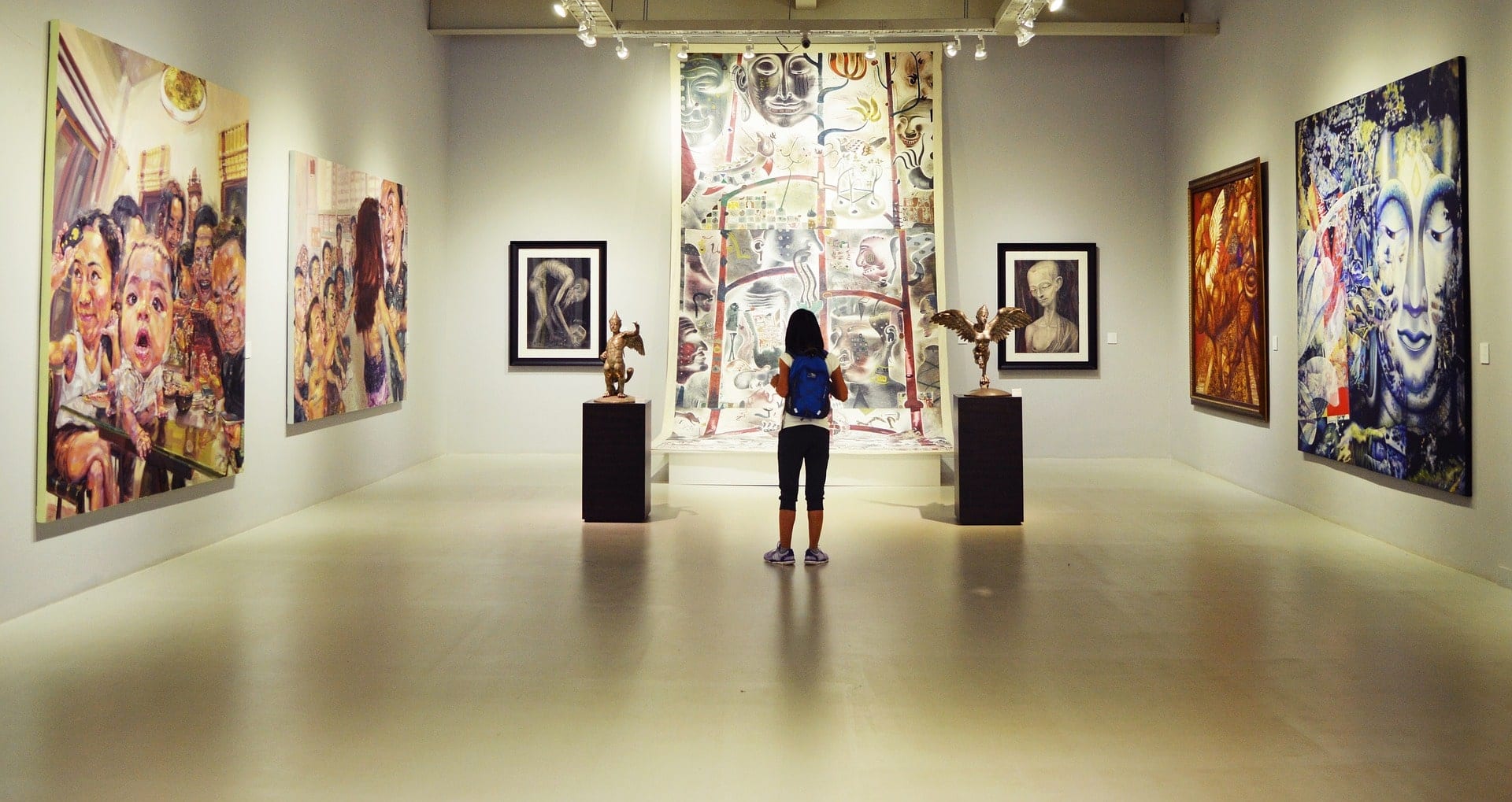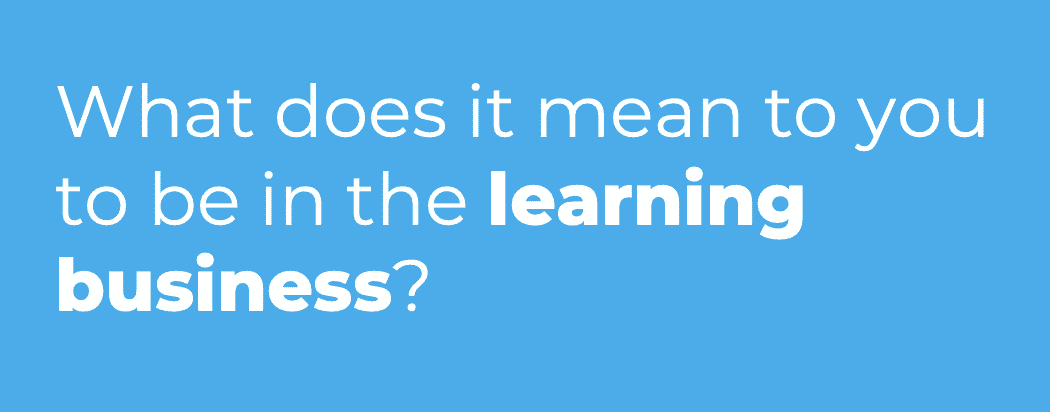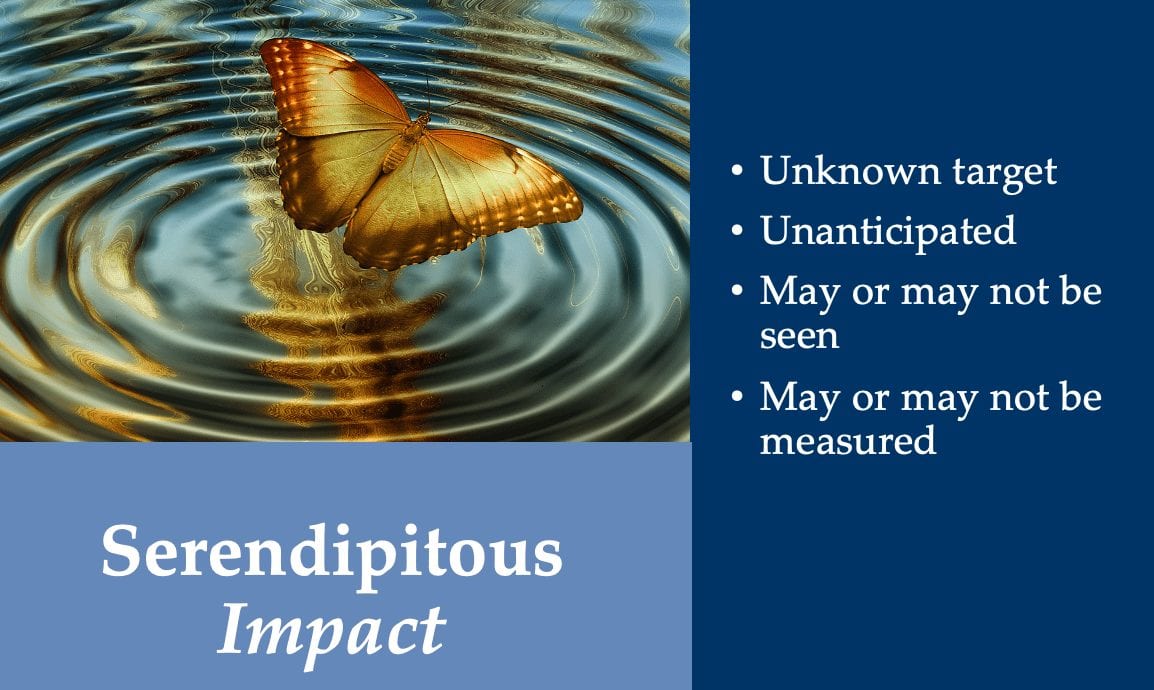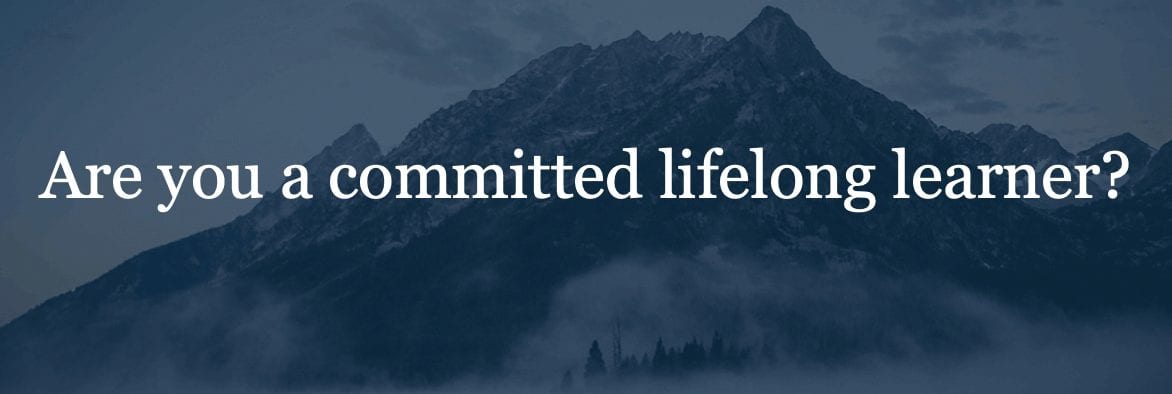
One of the challenges with virtual conferences – particularly with there now starting to be many, many more of them as a result of the COVID-19 pandemic – is that it is pretty easy for them to feel like bunch of Webinars strung together. The topics covered in each session are obviously somewhat related, and there may be some interesting chat conversation in each session, but even when all of that happens within a single platform, it can still feel like a pretty fragmented experience.
If you think about it, this has always been a challenge even with traditional face-to-face conferences, but with face-to-face events, the physical presence of the attendees is usually the force that holds everything together. In the virtual world, that force can be much harder to conjure.
Don’t get me wrong, I’m a big fan of virtual conferences – I’ve co-hosted one for years – and I know from first-hand experience that you can have amazing interactions and engagement at them. But I also know it is pretty easy for people to get distracted, to tune in and out, to view the event less as a cohesive whole than a few pieces to take part in and then move on to life’s other demands.
And that’s why I think the concept of curation is increasingly important.
This post is based on a talk I delivered at virtual conference earlier in 2020. The rest of the full text follows, but you can also view the video below.
Defining Conference Curation
The term curation, of course, comes from the museum world, where it means selecting and arranging the objects in an exhibit in a way that helps to accentuate their meaning and their value and to help museum visitors understand not just the individual object better, but also the greater context to which the object belongs. Skilled curation helps make an exhibit much more impactful.
Curation of a conference is similar. I define it as:
To connect content and interactions across an event to infuse them with common context and meaning, support attendees in “sense making,” and promote more effective learning
In short, it means taking the sessions that you have selected and creating a whole that is greater than the sum of the parts.
I’ve already suggested one reason why this is a good thing to do – it can help your event feel like more than just a string of Webinars – but there are bigger reasons for why that is an important goal in the first place. If you do it, you will:
- Improve attendee experience of the event – it simply feels better and you are more likely to engage with an experience that seems to hang together, tell a story, and make sense
- Supports learning as a process – learning isn’t about just absorbing information in one shot. Learning really isn’t an event, even though we attempt to provide it through events. It’s a process that requires reinforcement over time through repetition, recall, and elaboration. Curation supports all of this.
- Elevate the value of the conference – the better you get at curation, the more special your event feels and the less it feels like every other event out there. Whether online or off, you become an experience that attendees really look forward to year over year.
To be clear, curation doesn’t mean that you lay out the “right” way to experience an event or that you have all of the necessary content nailed. Rather, it provides a framework, a clear but flexible structure that can help attendees focus and – through interaction with each other, the content, and any speakers or facilitators – co-create an experience that is more likely to meet the needs of each individual attendee.
3 Approaches to Curate a Virtual Conference
So, there is a lot to be gained by applying a curation perspective to your conference content, but how do you do it?
To begin with, it starts with what conference any good conference organizer will do anyway, which is to be thoughtful about the selection and scheduling of sessions, but there are many possibilities beyond that to create a well curated conference.
Beyond that, there are three approaches we have used in our years of hosting a virtual conference – Learning • Technology • Design™. These are:
- Themes
- Frameworks & Models
- Priming and Synthesis
Themes
The first of these – themes – is an approach that it’s not unusual to find in conferences, whether online or off. Many conferences have themes, but usually they are more of a branding or marketing element and don’t tie all that tightly to the actual session content or delivery, they aren’t aligned with achieving specific business goals or specific learning goals and outcomes.
We like to be very conscious and intentional about choosing and making use of theme and ensuring that it will clearly support the learning outcomes that we aim for with conference. As part of doing that, we’ll generally frame the theme as a question to be considered throughout the conference – not necessarily answered but reflected upon and used as a lens for the experience.
In our 2020 conference, for example, we posed the thematic question “What does it mean to you to be in the learning business?” For our audience and the general focus of our event, it’s an important question to consider and the answers can have significant impact on how attendees approach their work.

There are a number of levels at which we worked the theme into the conference.
For starters, we included it as the focus of one of the videos we sent out to registrants in advance of the event. This made attendees aware of the question even before the event started and may have even gotten them thinking about their own answer a bit, even if unconsciously.
We posed the question again as part of the pre-roll slides that we run in advance of every session at our events. It was just one slide, but it popped up repeatedly, in the midst of other slides, during the times in which attendees were waiting for a session to start. The intention was, even if unconsciously, to have attendees continue to process the question – it was always there in the background as they were engaging with session content.
We also worked closely with our speakers to ensure they were aware of the theme and the specific question we were asking. We always pend quite a lot of time on speaker preparation in general – helping them to shape and rehearse their content – so we used that as an opportunity to make sure they knew why we had chosen the theme and what we planned to do with the question.
Part of that plan was to have each speaker answer the question at the beginning of their session at the brief on-screen conversations with speakers we do before each session at our conferences. We didn’t ask them to explicitly incorporate reference to the theme into their content, but the fact that we had discussed it in the context of helping them shape their content almost guaranteed that their session would be a bit more aligned with the overall direction and goals of the event.
We did, of course, ask attendees for their own perspective on the question during the event – I’ll come back and address our approach to that in more detail shortly.
And finally, we created a follow-up document for the event that – along with other content from the event – articulated our view on being in the learning business and included quotes from the answers that each of the speakers gave.
In general, made sure it was a pervasive concept that touched nearly every element of the event.
Naturally, this is a theme that is particular to us, but I would challenge you now as you are hearing about it to think about a theme that would apply in the context of your event and that could really support the business and learning outcomes you aim to achieve. It might apply to your entire event, or may you just want to apply it to a particular track or section within your event. Whatever the case, how might you frame that theme as a question that could be repeated in meaningful ways throughout your event?
Frameworks & Models
So, an overarching theme is one approach – and to go back to the museum analogy, you’ve probably had the experience of encountering that sort of overarching theme when you’ve visited any sort of major museum exhibit.
Another approach we use is frameworks and models. And these can be described as a set of specific points or perspectives – sometimes captured as a visual – that we encourage attendees to apply to whatever sessions they attend. I’ll provide a couple example to illustrate what I mean.
In 2019, for example, we were very focused on what it means not simply to attend an event, but to attend to it – to really engage and get value out of it as a learner and what learning providers need to do to support that. So, an important sub-theme was “impact.” To help attendees think in terms of impact, we bookended the concurrent sessions on one of the days with brief general sessions that were specifically about the topic of impact.
So, we started the day by discussing three different types of impact and how they might imply in the context of and educational event.
- direct – the impact the attendee herself experiences from the content and the interaction at the event
- indirect – the impact that occurs in the attendees’ organization or even out in the broader field as a result of what the attendee learned
- serendipitous – the unexpected, unanticipated impact that occurs because of people coming together at the event and/or going back out into the world afterward
After this brief discussion, attendees then went off to their chosen sessions, but at the end of the day, in another general session, we revisited these three perspectives and asked attendees to share how they had – or had not – experienced them in the context of the day. Even though attendees went to different sessions and had different experiences, this helped to bring things back together and connect the dots among those experiences.

So, frameworks are one approach we use, and it’s pretty unusual for us to not have a framework for each day of any conference we offer.
Another approach is models. These are similar to frameworks, but – at least as we use them – they tend to articulate – and usually visualize – an approach to putting the ideas that are likely to arise at the conference into practice.
An example of this is a maturity model we developed quite a while back that we call the Learning Business Maturity Model. This wasn’t developed specifically for a conference, but by its nature, it works well as sort of social learning object that can be referenced repeatedly throughout a conference to help tie together what attendees are learning from the different sessions they are attending.
Briefly, the idea with this model is that there are different stages of maturity for a learning business and five key domains of practice that need to be developed to advance through these stages. It provides a very relevant backdrop for the sort of topics and content we are likely to offer at one of our conferences and many organization – perhaps yours – have analogous models – whether they are maturity models, or competencies models, or professional standards of one sort or another – that can serve as a similar sort of backdrop.
So, simply coming back to this a number of times throughout the event and asking attendees to share how what they have learned throughout the day might tie back to the model is a relatively easy way to help weave together diverse experiences of attendees into a more cohesive whole. I’ll note, too, that it can be very valuable to capture and document these discussions and share them as a follow-on to the conference.
So, I encourage you to take a moment to consider whether you have any existing models that might be used as point of reference to tie together all or parts of your conference. And think, too, about the concept of frameworks and what sort of frames you might be able to apply to the days of your conference or perhaps to specific tracks within your conference. This can be a very fruitful area of discussion as you are doing your initial content planning.
Priming & Synthesis
The last approach I want to talk about is priming and synthesis, and I’ve already hinted at each of them because they play a key role in actually using themes, frameworks, and models effectively.
Priming is the idea that you help your attendees become as receptive as possible to engaging and learning – and particularly to engagement and learning related to the key ideas and goals of your conference.
There’s research in a range of fields that have led us to embrace this concept, but one of our primary sources in the work that Dr. Robert Cialdini has conducted for decades in the area of influence and persuasion. The reality is we do seek to have a certain degree of influence on our attendees – that’s inherent in just about any educational setting, whether we consciously acknowledge it or not. Cialdini is one of the most widely recognized authorities on influence and persuasion, and priming is one of the key techniques he has identified.
Synthesis, on the other hand, is a concept we adapted from cognitive psychology, and specifically Benjamin Bloom’s taxonomy of the cognitive domain, which is also often treated as stages of learning. Synthesis is the fifth out of six levels – it’s where you start taking the knowledge and skills you have acquired and beginning the process of putting them together to create a greater whole, to create meaning. So, synthesis as we use it in events is an effort to do just that – to come back around at the end of the day and apply some effort to putting ideas together and making meaning. In doing that, we hopefully help you to retain more and also help prime you for when you leave the event and go back int o your day to day activities.
You’ve already heard about one of our main techniques for priming – which we borrow directly from Cialdini (discussed in this interview with him) – and that’s to ask a question that helps to plant a seed – usually unconsciously at first and then more and more consciously. We asked the question about what it means to you to be in the business of learning,” for example, as a way to prime attendees not simply to address that question, but also to start thinking more of themselves as being in the learning business. That, in turn, influences their perspective on the event, how they engage with the content, how they engage with each other, and the meaning they ultimately get from the content and interactions we provide – which does back to your starting definition of curation.
Another example of a priming question is one I had the opportunity to discuss and validate with Cialdini himself before we used it an event a couple of years ago. Namely, in the slides we played as our attendees were joining sessions at that event, we posed the question “Are you a committed lifelong learner.” According to Cialdini’s research, asking a question like this primes people to think of themselves as serious lifelong learners and to behave like serious lifelong learners – even if unconsciously. Now, we have no real way to verify that this worked for us – we have to rely on Cialdini’s past research – but it is a very simple, low cost, low risk approach to try.

Now, questions are one key approach we take to priming, but to really pull everything together, we have a practice of bookending each day of our conferences with brief, dedicated priming and synthesis sessions.
These sessions are where, for example, we engage with the type of framework I highlighted earlier. In that case, we presented and discussed the framework during the priming session to get it into attendees’ minds, and then we returned to it at the end of the day and asked attendees to apply the framework as a way of reflecting on the day.
The priming and synthesis sessions are also where we often engage with the questions that we raise before or during an event. That may mean posing a priming question at the beginning of the day and then asking participants to respond to it during the priming or synthesis session for that day, but in other instances, we may wait all the way until the final day of an event to ask attendees with a question that has been posed long before.
For example, going back to that thematic question of “What does it mean to you to be in the learning business,” we posed that question before the event in multiple communications, we ran it as part of the pre-roll for sessions throughout the event, we asked speakers to address it, but we did not ask the attendees themselves to address it until the priming session on the final day. Having heard from attendees and discussed their answers, we then articulated a broader vision of the learning business in the synthesis session for the day that, and by that point, we felt all attendees would be able to connect with and relate to on a much deeper and more meaningful level.
Conclusion
So those are three approaches we have used to curate a virtual conference experience. It really is about curating the experience, not just the content – or, perhaps more accurately, to help the content become a meaningful, cohesive experience – and to help the overall experience be much more memorable and impactful.
Again, the museum analogy is useful.
First, museum curators generally have a great deal of content to choose from – just as you do. There are always many, many more objects back in the warehouse than show up an the exhibit. – and there are usually many more topics, sessions, and speakers available than can fit into any given event. It’s the curator vision for the experience that determines what makes it into the event, and it’s your vision as an event curator that determines what makes it into the conference.
When you think back on major museum exhibitions you have attended over the years, you may or may not be able to remember individual objects or the displays they have been a part of, but if it was a successful exhibit, there is a good chance you still have a general sense of what the exhibit was about, what it meant, what lessons you took from it.
So, I encourage you to consider how you might use any or all of the three approaches I have described here – themes, frameworks and models, and priming and synthesis – to create a similar effect with your virtual conference. By doing this, you’ll create experiences that are meaningful, impactful, and will keep people coming back.
Jeff Cobb
See also:

 The Essential Guide to Virtual Conference Platforms
The Essential Guide to Virtual Conference Platforms
Leave a Reply